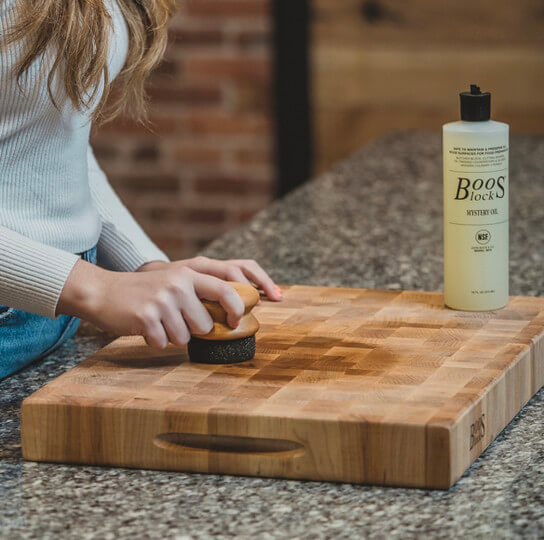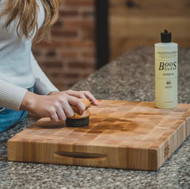Cleaning FAQs: Ridding Your Board of Pesky Stains and Odors
Posted by Peter Webb on 8th Dec 2023

How to Clean Wood Cutting Boards
Wood cutting boards are a great way to keep your kitchen counters clean and sanitary. However, they can also be prone to stains and odors. Here are some tips on how to clean wood cutting boards and remove stains and odors:
Stains
- Salt: Sprinkle salt on the stain and rub it in with a damp paper towel or sponge. Let the salt sit for a few minutes, then rinse it off with warm water.
- Vinegar: Mix equal parts vinegar and water in a bowl. Soak the stained area in the vinegar solution for 30 minutes, then rinse it off with warm water.
- Lemon: Cut a lemon in half and rub the cut side of the lemon on the stain. Let the lemon juice sit for a few minutes, then rinse it off with warm water.
Odors
- Salt and lemon: Sprinkle salt on the board and rub it in with half of a lemon. Let the salt and lemon juice sit for 2-3 minutes, then rinse it off with warm water.
- Baking soda: Sprinkle baking soda on the board and rub it in with a damp paper towel or sponge. Let the baking soda sit for a few minutes, then rinse it off with warm water.
- White vinegar: Works for both stains and odors. Mix equal parts white vinegar and water in a bowl. Soak the board in the vinegar solution for 30 minutes, then rinse it off with warm water.
Can I Use the Same Board for Raw Meats and Cooked Food?
Yes, you can use the same board for raw meats and cooked food if you clean it thoroughly. Maple boards (and other hardwoods) do not harbor bacteria, so thorough cleaning and drying will prevent most cross contamination, it's a good idea to have separate boards for meats and poultry and another for ready-to-eat foods (vegetables, salad, bread, etc.) This will help to prevent cross-contamination.
After Cleaning or Sanding, Be Sure to Oil the Board
After cleaning your wood cutting board, be sure to oil it well. This will help to protect the wood and prevent it from drying out. It’s especially important to oil your board if you sand it because you are exposing the wood grain. You can use a food-safe mineral oil or a cutting board oil.
Here are some additional tips for cleaning wood cutting boards:
- Wash your cutting board immediately after use.
- Use warm, soapy water and a sponge or dishcloth.
- Rinse the board thoroughly with warm water.
- Dry the board immediately with a clean towel.
- Do not put your cutting board in the dishwasher.
- Oil your cutting board once a month.
- By following these tips, you can keep your wood cutting board clean and sanitary for years to come.

